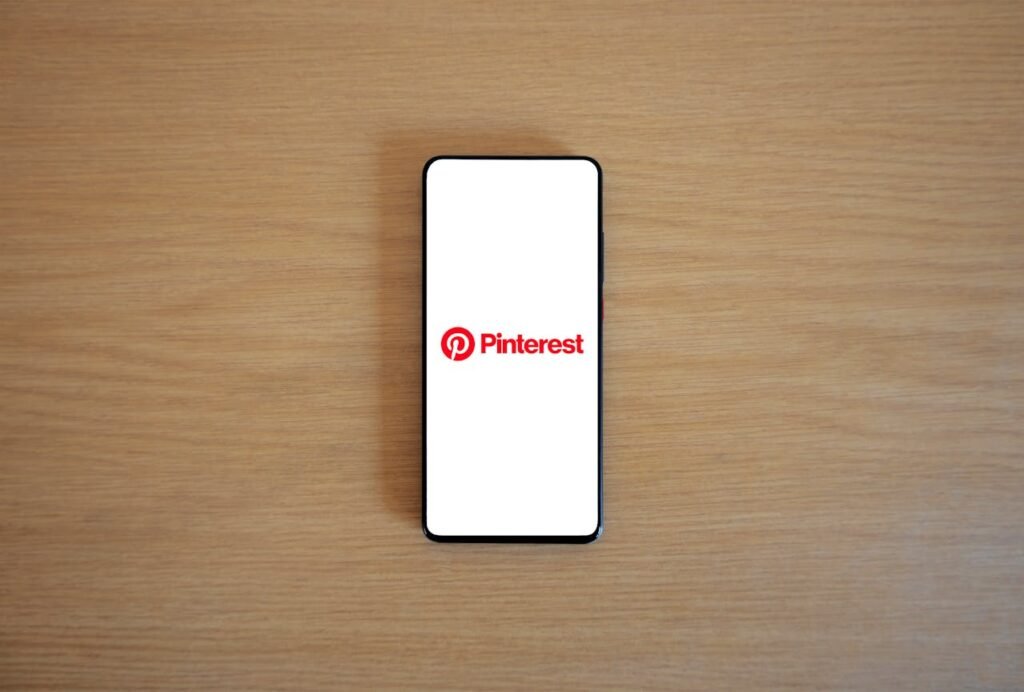Creating engaging videos for social media is a great way to connect with your audience, build your brand, and boost your online presence. With so many types of videos and platforms to choose from, it can be overwhelming to decide where to start. This guide will walk you through some of the most effective and engaging video ideas that you can use to captivate your audience and achieve your social media goals.
Understanding Your Audience

Know Who You’re Talking To
Before you start creating videos, it’s important to understand who your audience is. Knowing their interests, preferences, and behaviors will help you create content that resonates with them. Are they young and trendy, or more mature and professional? Do they prefer humor and entertainment, or are they looking for informative and educational content? Understanding these aspects will guide your content creation process and help you craft videos that your audience will love.
Analyzing Audience Data
Use analytics tools on your social media platforms to gather data about your audience. Look at metrics such as age, gender, location, and interests. This data will give you a clearer picture of who is engaging with your content and what type of videos might appeal to them. Pay attention to the types of videos that get the most engagement, and use this information to inform your future content strategy.
Creating Detailed Audience Personas
For startup founders, creating detailed audience personas can be particularly useful. An audience persona is a semi-fictional representation of your ideal customer based on market research and real data about your existing customers. Include information such as demographics, interests, challenges, and behavioral traits. These personas can guide your content creation and help ensure your videos are targeted and relevant.
For example, if your primary audience persona is “Tech-Savvy Tom,” a 30-year-old software engineer who enjoys staying updated with the latest technology trends, your video content might focus on tech reviews, tutorials, and industry news. Having these personas helps you tailor your content more precisely to meet the needs and interests of your audience.
Engaging with Your Audience Directly
One of the best ways to understand your audience is to engage with them directly. Use social media polls, surveys, and Q&A sessions to gather feedback and insights about what type of content they want to see. Ask open-ended questions to encourage detailed responses and use this feedback to shape your video content strategy.
For example, you could ask your followers, “What type of videos would you like to see more of on our page?” or “What topics are you most interested in learning about?” This direct engagement not only helps you understand your audience better but also makes them feel valued and heard.
Monitoring Competitor Engagement
Analyzing your competitors can provide valuable insights into what works and what doesn’t. Look at the type of content your competitors are producing and how their audience is engaging with it. Identify which videos are performing well and why. Use this information to refine your own content strategy.
For example, if a competitor’s product demonstration videos are getting high engagement, consider creating similar content for your brand. However, aim to add a unique twist or additional value to stand out from the competition.
Segmenting Your Audience
Segmenting your audience allows you to tailor your content to different groups within your overall audience. Segmentation can be based on various factors such as demographics, behavior, or engagement levels. By creating content that caters to the specific needs and interests of each segment, you can increase relevance and engagement.
For example, if your audience includes both young professionals and retirees, create different video content for each group. Young professionals might appreciate quick, informative videos about industry trends, while retirees might prefer longer, more detailed videos on topics of interest to them.
Leveraging Social Listening Tools
Social listening tools can help you monitor and analyze what your audience is saying about your brand and industry on social media. Use these tools to track mentions, keywords, and hashtags related to your brand. This can provide insights into your audience’s opinions, preferences, and pain points.
For example, if you notice a trend in your audience discussing a particular challenge, create video content that addresses this issue and offers solutions. Social listening helps you stay attuned to your audience’s needs and create content that is timely and relevant.
Testing and Iterating
Understanding your audience is an ongoing process. Continuously test different types of video content and analyze the results to see what resonates best with your audience. A/B testing can be particularly useful in this regard. Experiment with different video formats, lengths, and styles to see which ones drive the most engagement.
For example, you might create two versions of a product demo video—one short and to the point, and the other more detailed and explanatory. Analyze which version performs better in terms of views, likes, and shares, and use these insights to inform your future content strategy.
Building a Community
Building a community around your brand can deepen your understanding of your audience and foster greater engagement. Encourage your audience to interact not only with your content but also with each other. Create a sense of belonging and loyalty by responding to comments, joining conversations, and acknowledging your audience’s contributions.
For example, you can create a series of community-focused videos that highlight user-generated content, showcase customer stories, or feature interviews with loyal customers. Building a strong community helps you create more meaningful connections with your audience and gain deeper insights into their needs and preferences.
Crafting Compelling Stories
The Power of Storytelling
People love stories. A well-crafted story can captivate your audience, evoke emotions, and make your content memorable. Think about the message you want to convey and how you can tell a compelling story through your video. Whether it’s a behind-the-scenes look at your company, a customer success story, or a narrative that highlights your brand values, storytelling can make your videos more engaging and impactful.
Structuring Your Video
A good video has a clear structure. Start with a strong hook to grab attention in the first few seconds. This could be a surprising fact, a question, or a visually stunning shot. Then, build up the story with engaging content that keeps the viewer interested. Finally, end with a strong call to action, encouraging viewers to like, share, comment, or visit your website. Keeping your videos structured will help maintain viewer interest and drive engagement.
Developing a Unique Brand Narrative
For startup founders, developing a unique brand narrative is crucial. Your brand narrative is the overarching story that defines your brand and connects with your audience on a deeper level. It encompasses your mission, values, and the journey of your startup. Incorporate elements of this narrative into your videos to create a consistent and compelling message.
For example, if your startup is focused on sustainable fashion, your brand narrative might include stories about your commitment to ethical sourcing, the artisans who create your products, and the positive impact on the environment. Weaving these elements into your videos can help build a strong, relatable brand identity.
Highlighting Customer Journeys
Customer journey videos are powerful storytelling tools that showcase the real-life impact of your products or services. These videos follow the experiences of your customers, highlighting their challenges, how they discovered your product, and the transformation they experienced. This format not only builds credibility but also provides potential customers with relatable success stories.
For example, create a video that follows a customer who used your software to solve a specific problem in their business. Show their journey from initial frustration to the successful implementation of your solution, emphasizing the tangible benefits they achieved. This type of storytelling can be very persuasive and compelling.
Using Emotional Appeal
Emotions drive human behavior, and tapping into this can make your videos more impactful. Identify the emotions you want to evoke in your audience—whether it’s joy, inspiration, empathy, or excitement—and craft your story accordingly. Emotional storytelling can create a deeper connection with your audience and make your message more memorable.
For instance, if your startup offers fitness products, create a video that tells the story of someone’s journey to better health and fitness. Highlight their struggles, the support they received from your brand, and their ultimate success. This emotional journey can resonate with viewers and inspire them to take action.
Incorporating Visual and Auditory Elements
Visual and auditory elements play a crucial role in storytelling. Use visuals, music, and sound effects to enhance the narrative and create a more immersive experience. High-quality visuals can capture attention, while music and sound effects can set the tone and evoke emotions.
For example, a startup focusing on adventure travel might use breathtaking footage of exotic locations, accompanied by uplifting music and natural sounds. This combination can transport viewers into the story, making them feel part of the adventure and more likely to engage with your brand.
Creating Episodic Content
Episodic content is a strategic way to keep your audience engaged over a longer period. Create a series of videos that tell an ongoing story, with each episode ending on a cliffhanger or a teaser for the next installment. This format encourages viewers to return for more, increasing engagement and loyalty.
For instance, a tech startup could create an episodic series following the development of a groundbreaking product. Each episode could highlight different stages of the process, from initial brainstorming and prototyping to testing and launch. This behind-the-scenes look can build anticipation and keep your audience invested in your journey.
Featuring Authentic Voices
Authenticity is key to effective storytelling. Feature real people—whether they are your employees, customers, or industry experts—in your videos. Authentic voices add credibility and make your stories more relatable. Avoid overly scripted or polished content; instead, focus on genuine, unscripted moments that showcase the human side of your brand.
For example, a startup in the healthcare industry could create videos featuring patients and healthcare providers discussing their experiences with your product. These authentic testimonials can build trust and demonstrate the real-world impact of your solutions.
Leveraging User-Generated Stories
User-generated content (UGC) can be a goldmine for compelling stories. Encourage your customers to share their experiences and feature their stories in your videos. UGC adds authenticity and diversity to your content, showing different perspectives and use cases.
Create campaigns that invite customers to submit their stories through videos or social media posts. Select the best submissions and create a compilation video that highlights the diverse ways your product or service has made a difference. This approach not only provides engaging content but also fosters a sense of community and loyalty among your customers.
Utilizing Data-Driven Storytelling
Data-driven storytelling combines the power of narrative with the credibility of data. Use data and statistics to support your story and make it more persuasive. Visualize the data through charts, graphs, and infographics to make it easy to understand and impactful.
For example, if your startup offers a productivity tool, create a video that tells the story of a company that improved its efficiency using your product. Use data to highlight the measurable improvements, such as increased productivity, reduced costs, or higher employee satisfaction. This combination of storytelling and data can make a compelling case for your product.
Adapting Stories for Different Platforms
Different social media platforms have unique characteristics and user behaviors. Adapt your storytelling approach to fit each platform. For instance, Instagram and TikTok favor short, visually engaging content, while YouTube allows for longer, more in-depth videos. Tailor your stories to suit the platform’s format and audience preferences.
For example, you could create a series of short, punchy videos for Instagram Stories that highlight key moments from a longer YouTube video. This strategy helps you reach different segments of your audience and maximize the impact of your content across multiple platforms.
Utilizing Trends and Challenges
Staying Current
Social media trends and challenges can provide a great opportunity to create engaging and relevant content. Keeping an eye on what’s trending can help you tap into the current conversations and reach a wider audience. Participate in popular challenges, use trending hashtags, and create videos that reflect the latest trends in your industry. This can help increase your visibility and engagement.
Creative Adaptations
While it’s important to stay current, it’s also essential to put your unique spin on trends and challenges. Think about how you can adapt a trending topic to fit your brand and message. This not only makes your content relevant but also keeps it unique and authentic. Creative adaptations of trends can set you apart from the competition and make your videos stand out.
Identifying Relevant Trends
For startup founders, identifying trends that align with your brand’s values and mission is crucial. Not every trend will be suitable for your brand, so focus on those that resonate with your target audience. Use social media listening tools and platforms like Twitter, Instagram, and TikTok to monitor trending hashtags and topics. Analyze which trends are gaining traction and determine if they align with your brand’s voice and goals.
For instance, if there’s a trend around sustainability and your startup focuses on eco-friendly products, create content that highlights how your brand contributes to this trend. This alignment ensures that your participation in the trend feels natural and relevant.
Engaging in Challenges
Participating in social media challenges can boost your visibility and engagement. Challenges often involve user-generated content, which can increase your reach as participants share their entries with their own followers. Create your own challenge or join existing ones that align with your brand.
For example, if there’s a fitness challenge trending on TikTok, and your startup sells health supplements, create a video showing how your product can enhance performance in the challenge. Encourage your followers to participate and share their own videos using a branded hashtag.
Collaborating with Influencers
Influencers often have their finger on the pulse of social media trends. Collaborating with influencers can help you tap into these trends more effectively. Choose influencers who align with your brand and have a strong following among your target audience. Work with them to create content that incorporates the latest trends and challenges.
For instance, if there’s a new dance challenge going viral, partner with a fitness influencer to create a dance workout video featuring your products. This collaboration can amplify your reach and make your participation in the trend more credible and engaging.
Leveraging User-Generated Content
User-generated content (UGC) is a powerful way to engage with trends and challenges. Encourage your audience to create and share their own videos related to a trend or challenge. Feature the best entries on your social media channels to show appreciation and build community.
Create a branded hashtag for your UGC campaign and promote it across your social media platforms. This not only increases engagement but also provides you with a stream of fresh, authentic content that can be repurposed in various ways.
Timing Your Content
Timing is critical when leveraging trends and challenges. To maximize impact, create and share your content while the trend is still hot. Use social media analytics tools to identify peak engagement times for your audience and schedule your posts accordingly.
For instance, if you notice that a particular trend peaks in engagement during weekends, plan your content creation and posting schedule to align with this timing. Being quick to join trends can give you a competitive edge and help your content gain more traction.
Analyzing Trend Performance
After participating in a trend or challenge, analyze the performance of your content to understand its impact. Look at metrics such as views, likes, shares, and comments to gauge audience engagement. Use this data to refine your approach for future trends.
For example, if a particular type of challenge video performed exceptionally well, consider creating more content in that style or format. Conversely, if a trend didn’t resonate with your audience, analyze why and adjust your strategy accordingly.
Creating Trend-Related Content Calendars
To stay organized and proactive, create a content calendar specifically for trends and challenges. This calendar should include upcoming trends, content ideas, and deadlines for creation and posting. Having a dedicated calendar helps you stay ahead of trends and ensures you’re always prepared to capitalize on new opportunities.
Review industry reports, follow thought leaders, and participate in relevant forums to identify potential trends early. Incorporate these insights into your trend-related content calendar to ensure a steady stream of relevant content.
Balancing Trends with Evergreen Content
While trends and challenges are important for boosting engagement, it’s also essential to balance them with evergreen content. Evergreen content remains relevant over time and continues to attract views and engagement long after it’s posted. This balance ensures that your content strategy remains robust and sustainable.
For example, alongside your trend-based videos, create educational tutorials, product demonstrations, and customer testimonials that provide lasting value. This approach helps you build a comprehensive content library that serves both immediate engagement and long-term brand growth.
Engaging with Trendsetters
Engage with trendsetters and thought leaders in your industry to stay ahead of emerging trends. Comment on their posts, share their content, and build relationships with them. This engagement can provide valuable insights into upcoming trends and position your brand as a forward-thinking leader in your niche.
For instance, if you’re in the tech industry, follow influential tech bloggers and analysts. Engage with their content and incorporate their insights into your own trend-related videos. This strategy can help you anticipate trends and create timely, relevant content.

Behind-the-Scenes Content
Humanizing Your Brand
Behind-the-scenes videos offer a glimpse into the day-to-day operations of your business, helping to humanize your brand. These videos can showcase your company culture, introduce team members, and provide insight into how your products or services are created. By giving your audience an insider’s look, you can build a stronger connection and foster trust.
Building Authenticity
Authenticity is key in today’s social media landscape. Behind-the-scenes content can demonstrate transparency and authenticity, showing that your brand is genuine and relatable. Share the highs and lows, the challenges and successes, and let your audience see the real people behind the brand. This honesty can resonate deeply with viewers and enhance your brand’s credibility.
Showcasing Company Culture
For startup founders, showcasing company culture is an excellent way to attract talent, investors, and customers. Behind-the-scenes videos can highlight your company’s unique culture, values, and work environment. Show how your team collaborates, celebrates milestones, and engages in team-building activities. This not only humanizes your brand but also makes it more attractive to potential employees and partners.
For example, create a video tour of your office, showing different departments and introducing team members. Highlight any unique aspects of your workplace, such as an open floor plan, creative spaces, or fun perks like a game room or coffee bar. This gives viewers a sense of what it’s like to work at your startup and fosters a sense of community and inclusivity.
Documenting the Creative Process
Take your audience behind the scenes of your creative process. Whether you’re designing a new product, planning a marketing campaign, or brainstorming innovative solutions, showing how you bring ideas to life can be fascinating for your audience. Documenting the creative process can also highlight your team’s expertise and dedication.
For instance, if your startup is launching a new app, create a series of videos that follow the development process from initial concept to final launch. Show your team brainstorming, sketching wireframes, coding, testing, and finally celebrating the launch. This not only provides valuable insight into your process but also builds anticipation and excitement for the final product.
Sharing Behind-the-Scenes Stories
Stories are a powerful way to connect with your audience on a deeper level. Share behind-the-scenes stories that highlight your team’s journey, challenges, and successes. These stories can be personal anecdotes, reflections on pivotal moments, or insights into your company’s growth.
For example, share a story about a major challenge your startup faced and how your team overcame it. This could be anything from a funding setback to a product failure that led to a breakthrough. By sharing these stories, you show your audience that your brand is resilient and committed to success, which can inspire trust and loyalty.
Highlighting Team Members
Introduce your audience to the people who make your startup great. Highlight different team members, showcasing their roles, expertise, and personalities. This not only humanizes your brand but also gives credit to your team for their hard work and contributions.
Create short video profiles of individual team members, featuring their backgrounds, what they do at your company, and what they enjoy about working there. Include personal touches, such as their hobbies or favorite moments at work. This helps your audience connect with your brand on a personal level and fosters a sense of community.
Demonstrating Workflows and Processes
Show your audience how things get done at your startup. Demonstrate your workflows and processes, from product development and manufacturing to customer service and marketing. This transparency can build trust and credibility, as it shows that you’re open about how your business operates.
For example, create a video series that walks viewers through the steps of your product development process, from initial research and prototyping to production and quality control. Highlight the attention to detail and quality standards your team follows, reinforcing the value and reliability of your products.
Engaging in Real-Time Behind-the-Scenes
Live behind-the-scenes videos can add an element of excitement and immediacy to your content. Host live streams where you take your audience behind the scenes in real-time. This could be a tour of your office, a look at an event or trade show, or a live Q&A with your team.
For instance, if you’re attending a major industry event, live stream from the event floor, showing key moments, interviews with speakers, and your team’s experience. This real-time engagement can make your audience feel like they’re part of the action and build a deeper connection with your brand.
Showcasing Product Creation
Give your audience an insider’s look at how your products are made. This could be a behind-the-scenes tour of your manufacturing facility, a look at your design studio, or a demonstration of the craftsmanship that goes into your products.
For example, if your startup produces handmade jewelry, create a video that shows the entire process from sourcing materials to the final product. Highlight the skill and care that goes into each piece, showcasing the unique value of your products.
Capturing Milestones and Celebrations
Share your company’s milestones and celebrations with your audience. This could include product launches, reaching a funding goal, opening a new office, or celebrating an anniversary. Capturing these moments on video and sharing them with your audience can foster a sense of shared excitement and achievement.
For example, create a video of your team celebrating a major milestone, such as securing a significant investment or launching a new product. Show the behind-the-scenes preparation, the event itself, and the team’s reactions. This not only celebrates your achievements but also involves your audience in your journey.
Creating Interactive Content

Polls and Q&A Sessions
Interactive videos that invite audience participation can significantly boost engagement. Use features like polls and Q&A sessions to get your audience involved. Ask for their opinions, answer their questions, and make them feel like a valued part of your community. This interaction not only increases engagement but also provides valuable insights into your audience’s preferences and concerns.
Contests and Giveaways
Contests and giveaways are a great way to generate excitement and encourage user participation. Create videos that announce and explain the contest rules, and use follow-up videos to showcase winners and their prizes. This approach can increase shares, likes, and comments, and help grow your audience. Ensure that your contest is easy to enter and that the prizes are appealing to your target audience.
Interactive Stories and Choose-Your-Own-Adventure Videos
Interactive stories and choose-your-own-adventure videos can create a unique and engaging experience for your audience. These videos allow viewers to make choices that influence the outcome of the story, making them feel more involved in the content. This format can be used for product tutorials, customer journey simulations, or entertaining narratives that highlight your brand’s value.
For example, if your startup offers financial planning services, create an interactive video that allows viewers to choose different financial goals and see tailored advice based on their choices. This not only educates your audience but also showcases the personalized nature of your services.
Live Quizzes and Trivia
Live quizzes and trivia games are fun and engaging ways to interact with your audience. Host live sessions where viewers can answer questions related to your industry, products, or general knowledge. Offer prizes for the top scorers to incentivize participation. This format can increase viewer engagement and retention, as people are likely to stay tuned in for the entire session.
For instance, if your startup is in the fitness industry, host a live fitness trivia quiz. Ask questions about nutrition, exercise, and health tips. This not only entertains your audience but also educates them, reinforcing your brand’s authority in the industry.
Virtual Tours and Experiences
Virtual tours and experiences can provide an immersive way for your audience to interact with your brand. Use 360-degree videos or virtual reality (VR) to offer tours of your facilities, showcase events, or demonstrate product usage. This format can create a memorable experience and make your audience feel like they are part of your brand’s journey.
For example, if your startup operates in the travel industry, create a virtual tour of popular destinations. Use 360-degree video to let viewers explore different locations as if they were there in person. This immersive experience can inspire travel planning and generate interest in your services.
Interactive Product Demonstrations
Interactive product demonstrations allow viewers to explore different features and functions of your product in a hands-on way. Use clickable elements within the video to let viewers choose which aspects of the product they want to learn more about. This personalized approach can enhance understanding and interest in your product.
For example, if your startup sells smart home devices, create an interactive video that lets viewers click on different parts of the device to see detailed demonstrations of its features. This not only educates your audience but also showcases the versatility and benefits of your product.
Customer Feedback and Reviews
Incorporate customer feedback and reviews into your interactive content. Create videos where you read and respond to customer reviews, answer frequently asked questions, or showcase user-generated content. This approach can build trust and show that you value your customers’ opinions.
For instance, create a video where you highlight positive customer reviews and demonstrate how your team is implementing feedback to improve your products or services. This transparency can strengthen your relationship with your audience and encourage more customers to share their experiences.
Personalized Video Messages
Personalized video messages can create a strong connection with your audience. Use data and customer insights to create videos that address viewers by name and tailor the content to their specific interests or needs. This level of personalization can enhance engagement and make your audience feel valued.
For example, if a customer has recently purchased a product from your startup, send them a personalized thank-you video that includes tips on how to get the most out of their purchase. This personalized touch can enhance customer satisfaction and loyalty.
Gamified Content
Gamification adds an element of fun and competition to your videos. Incorporate game-like elements, such as points, levels, and rewards, to encourage viewer participation and engagement. This approach can make your content more enjoyable and increase viewer retention.
For instance, create a video series where viewers can earn points for completing challenges or answering questions correctly. Offer rewards or recognition for top participants to incentivize engagement. This gamified approach can make your content more interactive and engaging.
Interactive Webinars and Workshops
Host interactive webinars and workshops that allow for real-time participation. Use live polls, Q&A sessions, and breakout rooms to engage your audience and provide value. This format can be particularly effective for educational content, product training, and industry insights.
For example, if your startup offers marketing services, host a live workshop on social media strategies. Include interactive elements such as live polls to gather audience opinions, breakout rooms for group discussions, and a Q&A session to address specific questions. This interactive approach can make your webinars more engaging and valuable.
Augmented Reality (AR) Experiences
Leverage augmented reality (AR) to create interactive and immersive experiences for your audience. Use AR to allow viewers to try out products virtually, explore interactive environments, or engage with branded content in a new way. This innovative approach can set your brand apart and provide a memorable experience.
For instance, if your startup sells home decor, create an AR app that allows users to see how different pieces of furniture would look in their own homes. This interactive experience can enhance the shopping experience and increase the likelihood of purchase.
Conclusion
Creating engaging videos for social media is a powerful way to connect with your audience, build your brand, and drive engagement. By understanding your audience, crafting compelling stories, leveraging different video formats, utilizing trends and challenges, showcasing behind-the-scenes content, and creating interactive experiences, you can develop a dynamic video strategy that captures attention and fosters loyalty.
For startup founders, it’s essential to approach video content with a strategic mindset. Know your audience’s preferences, tell authentic stories that reflect your brand’s mission and values, and stay flexible to adapt to new trends and platforms. Use analytics to refine your strategy and always seek to provide value through educational, entertaining, and inspiring content.
Read Next:
- Utilizing SEO Analytics to Optimize Startup Site Structure
- Measuring Video Content Performance through SEO Analytics
- SEO Analytics for Startup International Expansion: Multilingual Insights
- Utilizing SEO Analytics to Enhance Startup User Experience
- Measuring Startup SEO ROI with Advanced Analytics
- Analyzing Organic vs. Paid Search Traffic with SEO Analytics





















